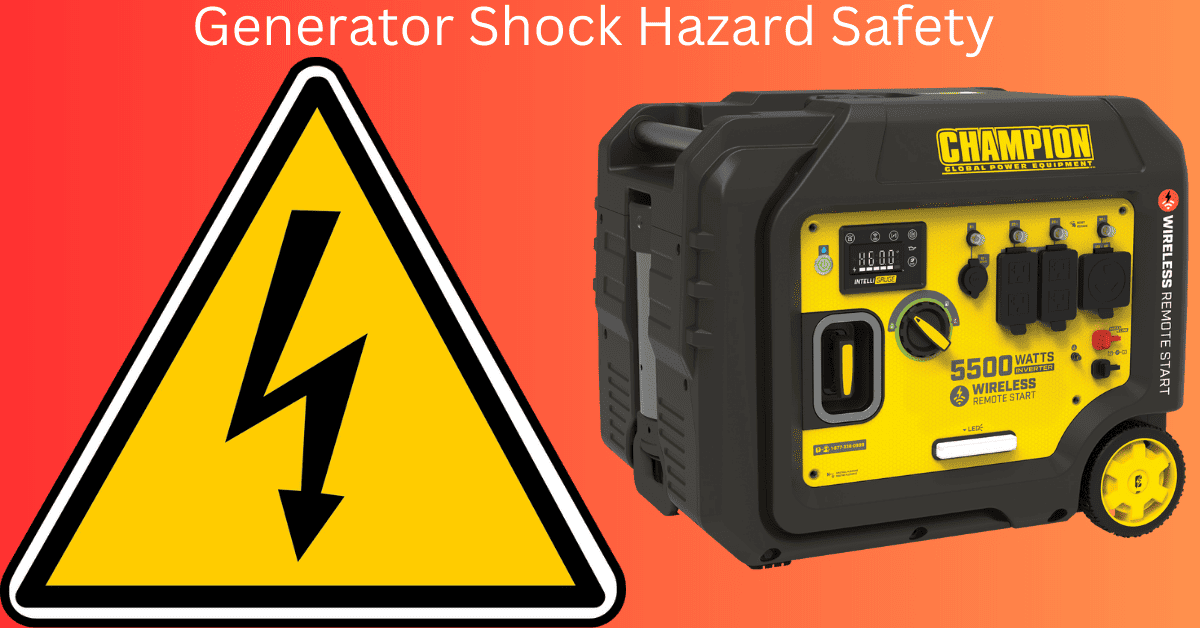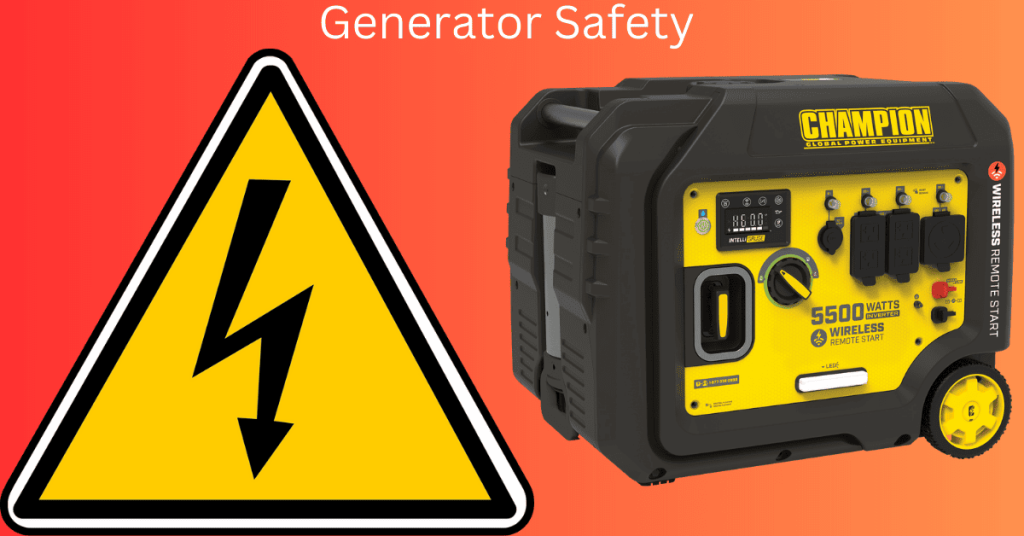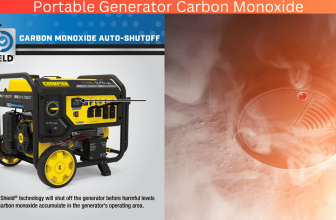
As humans, we have an innate desire for control and power over our surroundings. We want to be able to take charge and handle any situation that comes our way. This is especially true during times of emergency or disaster, when access to electricity is limited or nonexistent.
Portable generators have become a popular solution for those seeking to regain some control during such times. However, with great power comes great responsibility. It is crucial to be aware of the potential dangers associated with portable generators and to take the necessary safety measures to protect ourselves and our loved ones.
In this article, we will discuss the importance of safety when using portable generators and provide tips on how to use them with care. From choosing the right type of generator to proper placement and installation, we will cover all the necessary steps to ensure that your generator use is safe and effective.
We will also delve into carbon monoxide and electrical safety, as well as emergency preparedness. Whether you are a seasoned generator user or a newcomer to this world, this article will empower you with the knowledge and tools to use your portable generator with care and confidence.
Key Takeaways
- Choosing the right type of generator and considering wattage requirements is important for home use.
- Proper placement of the generator and regular maintenance are crucial for safety and optimal performance.
- Carbon monoxide safety and handling extension cords with care are essential to prevent hazards.
- Being prepared for emergencies and having a plan in place, as well as ensuring everyone in the household knows how to safely operate the generator, is important.

Choose the Right Type of Generator
If you’re planning on using a generator at home, it’s important to choose the right type to ensure your safety and prevent potential hazards. There are two main types: portable and standby.
Portable generators are more commonly used by homeowners because they’re affordable and easy to move around. When choosing a portable generator, consider the wattage you need. Determine which appliances you’ll need to power and add up their wattage requirements. This will help you choose a generator with the appropriate wattage capacity.
It’s also important to choose a generator with a grounded outlet and circuit-breaker protection. Look for models with a low-oil shutoff feature, which automatically turns off the generator when the oil level is too low. Once you’ve chosen the right type of generator, it’s important to place it in a safe location.
The generator should be placed outside, away from doors and windows, to prevent carbon monoxide poisoning. Carbon monoxide is a colorless, odorless gas that can be deadly if inhaled. It’s also important to keep the generator dry and away from any water sources. Proper generator placement is crucial to ensure your safety and the safety of those around you.
With the right type of generator and proper placement, you can safely and effectively use a generator in your home. Remember to always follow manufacturer’s instructions and never overload the generator. Taking these safety measures will empower you to use a generator with care.
Proper Generator Placement
In this section, we’ll discuss the proper placement of generators. When using a generator, it’s important to keep it outdoors and away from any windows or doors. This will prevent any harmful fumes from entering your home or building.
Additionally, it’s crucial to use extension cords safely to avoid any potential hazards.
Keep Generators Outdoors
Place your portable generator outside to avoid toxic fumes from entering your home. It may be tempting to keep it inside your garage or shed, but this is a dangerous mistake. Here are some reasons why you should always keep your generator outdoors:
- Carbon monoxide is a colorless, odorless gas that can be deadly. Generators produce this gas, and if it’s not vented properly, it can quickly fill your home and cause carbon monoxide poisoning.
- Generators create heat, and if they’re placed in an enclosed space, they can overheat and start a fire.
- Running a generator indoors can also cause a buildup of moisture, which can lead to mold growth and other health hazards.
- Keeping your generator outside also reduces the risk of tripping over cords or accidentally knocking it over.
- Finally, it’s important to remember that generators should never be placed under an overhang or near any other structures. This can cause carbon monoxide to build up and potentially harm anyone in the surrounding area.
Now that you know why it’s crucial to keep your generator outdoors, let’s talk about the importance of keeping it away from windows and doors.
Keep Generators Away from Windows and Doors
Make sure to keep your windows and doors clear of your generator to prevent dangerous fumes from entering your home. Carbon monoxide, a colorless and odorless gas, can build up quickly and cause serious harm or even death.
It’s important to keep generators at least 20 feet away from any openings to your home, including windows, doors, and vents. Additionally, be sure to install battery-operated carbon monoxide detectors in your home.
These detectors can alert you to any dangerous levels of carbon monoxide so that you can take action to protect yourself and your family. With these simple precautions, you can safely and confidently use your portable generator during power outages or other emergencies.
Now, let’s move on to the next section and learn how to use extension cords safely.
Use Extension Cords Safely
To keep your electric power flowing smoothly during a blackout, it’s important to handle extension cords with kid gloves – treating them like delicate threads in a tapestry.
First things first, make sure your extension cords are rated for the power load you need to use. Overloading an extension cord can cause it to overheat and potentially start a fire, putting your safety and the safety of others at risk.
In addition, make sure your cords are in good condition, without any fraying or exposed wires. If you notice any damage, replace the cord immediately.
When using an extension cord, don’t run it under carpets or rugs, or through doorways or windows where it can be pinched or damaged. Avoid using multiple extension cords connected together, as this can also lead to overheating and potential fire hazards.
By taking these simple precautions, you can ensure that your extension cords are used safely and effectively during a power outage. Now, let’s move on to the next section and talk about generator installation.
Generator Installation
When installing a portable generator, it’s important to ensure it is located in a well-ventilated area to prevent carbon monoxide buildup. Carbon monoxide is an odorless and colorless gas that can cause serious harm and even death in high concentrations. To prevent this, make sure that the generator is placed outside, at least 20 feet away from any windows, doors, or vents.
In addition, you should also make sure that the generator is placed on a flat surface that is dry and away from any flammable materials. This will prevent any accidents from occurring while the generator is in use. Be sure to also follow the manufacturer’s instructions for installation and use, as each generator may have specific requirements.
Proper installation of a portable generator is essential for both your safety and the longevity of the generator. However, it’s not enough to simply install the generator and forget about it. Regular maintenance is also necessary to ensure that the generator is in good working condition. This includes checking the oil and fuel levels, cleaning the air filters, and inspecting the spark plugs.
By regularly maintaining your generator, you can ensure that it will be ready to use when you need it most.
Generator Maintenance
Regular maintenance of your generator is crucial for its longevity and optimal performance, so don’t neglect it! We recommend conducting maintenance at least once a year or after every 100 hours of use.
Here are some tips to help you maintain your portable generator:
- Check the oil level and change it regularly. Oil is the lifeblood of your generator’s engine, so it’s important to keep it topped up and clean. You should change the oil after the first 20 hours of use and then every 50 hours thereafter. Make sure to use the recommended oil type for your generator.
- Keep the air filter clean. A dirty air filter can reduce your generator’s performance and increase fuel consumption. Check the air filter regularly and clean or replace it as needed. Most air filters can be cleaned with compressed air or by washing with soap and water.
- Store your generator properly. When not in use, store your generator in a dry, well-ventilated area. Make sure to drain the fuel tank and carburetor before storing to prevent fuel from going bad and causing damage.
By following these simple maintenance tips, you can ensure that your generator runs smoothly and reliably when you need it most.
In the next section, we’ll discuss carbon monoxide safety and how to prevent poisoning while using your generator.
Carbon Monoxide Safety
Maintaining proper ventilation is essential for avoiding carbon monoxide poisoning while using your generator. Carbon monoxide is a colorless and odorless gas that can be fatal if inhaled in large quantities. Generators produce this gas as a result of the combustion process. Therefore, it’s crucial to ensure that generators are placed in well-ventilated areas to prevent carbon monoxide buildup.
This can be achieved by placing the generator outdoors, away from windows, doors, and air intakes. In addition to proper ventilation, it’s important to install carbon monoxide detectors in the area where the generator is being used. These detectors will alert you if the levels of carbon monoxide in the air are too high.
Make sure to test the detectors regularly to ensure that they’re functioning correctly. If the detector sounds an alarm, immediately turn off the generator, open windows and doors, and evacuate the area. By following these safety measures, you can prevent carbon monoxide poisoning and ensure the safe use of your generator.
However, it’s important to note that electrical safety is equally important when using a portable generator. Always use grounded extension cords, don’t overload the generator, and never operate it in wet conditions. Ensuring the safe use of your generator will help you to empower your household with care and peace of mind.
Electrical Safety
To keep ourselves safe while using our generator, we’ll want to make sure we’re taking proper electrical safety measures. This includes using grounded extension cords, avoiding overloading the generator, and keeping it away from wet conditions. Here are some specific tips to follow:
- Use heavy-duty extension cords that are rated for outdoor use and have a grounded, three-prong plug.
- Never connect your generator directly to your home’s electrical system or a wall outlet.
- Keep the generator at least 20 feet away from your home or any other buildings, and make sure it’s on a dry, level surface.
- Turn off all appliances and equipment before shutting down the generator.
By following these guidelines, we can greatly reduce the risk of electrical shock or fire hazards. However, it’s important to remember that accidents can still happen. That’s why it’s crucial to also be prepared for emergencies.
In the next section, we’ll discuss how to create an emergency plan and what supplies to have on hand.
Emergency Preparedness
Now that we know how to handle our portable generators safely, let’s talk about emergency preparedness. As we all know, natural disasters can happen anytime, anywhere. And while we can’t control when these events occur, we can take steps to ensure that we’re prepared to handle them. And that includes having a plan for our portable generators.
First and foremost, it’s important to have a designated storage area for your generator. This area should be well-ventilated, dry, and away from any potential sources of ignition. It’s also a good idea to keep your generator elevated off the ground to prevent water damage in case of flooding.
Secondly, make sure you have enough fuel stored in a safe location. You don’t want to be caught in a situation where you’re running low on fuel and can’t refill due to a power outage or other emergency. And always make sure to use the correct fuel type recommended by your generator’s manufacturer.
Have a plan in place for how you’ll use your generator in an emergency situation. This can include having extension cords ready to connect to essential appliances, like a refrigerator or medical equipment. And make sure everyone in your household knows how to safely start and operate the generator, in case you’re not around to do it yourself.
By taking these steps, you’ll be empowered to handle any emergency situation with care and confidence.
Frequently Asked Questions
What is the maximum running time for a portable generator?
The maximum running time for a portable generator varies depending on its fuel capacity and usage. We need to ensure we’re aware of our generator’s limits to prevent any damage or danger.
Can a portable generator be used indoors?
No, portable generators are not safe for indoor use. Carbon monoxide buildup can be lethal. Always operate generators outside with proper ventilation. Safety first, always.
Can a portable generator be safely operated in wet conditions?
Yes, portable generators can be safely operated in wet conditions with proper precautions. We always follow manufacturer instructions, keep it dry, and use a ground-fault circuit interrupter outlet. Stay safe and empowered!
How often should the oil be changed in a portable generator?
We change the oil in our portable generator after every 50 hours of use. It’s a crucial maintenance step that ensures peak performance and longevity. Neglecting it can lead to costly repairs and downtime. Don’t skimp on oil changes!
Is it safe to use extension cords with a portable generator?
Yes, it’s safe to use extension cords with a portable generator as long as you follow some basic safety measures. Make sure the extension cord is rated for outdoor use and has the correct gauge for your generator’s wattage. Always plug the cord into the generator first and then into your appliances.
Conclusion
In conclusion, it’s vital to empower with care when using portable generators. They can provide much-needed power during emergencies or power outages. However, their improper use can lead to serious hazards, including carbon monoxide poisoning, electrical shocks, and fires.
Just like a double-edged sword, portable generators come with their own set of risks and benefits. Therefore, it’s crucial to choose the right type of generator, follow proper placement and installation guidelines, and perform regular maintenance checks.
Remember, safety should always be a top priority when using portable generators. So, let’s use them wisely and not let them become a symbol of danger, but rather a symbol of empowerment and resilience.





